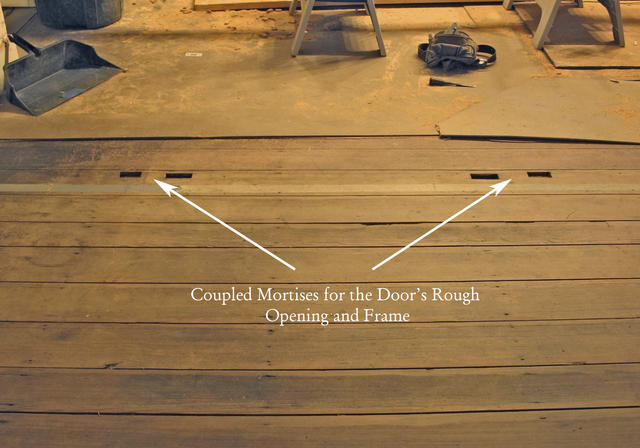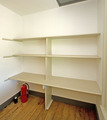
Since every room needs at least one doorway, one of the most important parts of the investigation was to determine the location and size of the closet’s doorway. To locate the doorway the Restoration Team first looked at the evidence on the floor to find any irregularities in the spacing of the studs. Because doorways are often wider than the typical space found between the studs, the Team was specifically looking for evidence of studs that were unusually far apart. Additionally, the Team looked for coupled pairs of mortises. Because doorways in the 18th-century often used two sets of mortises, with an outermost set to seat the studs that framed the rough opening and an inner set to anchor the doorframe itself, a coupled pair of mortises would also indicate a doorway. When the floor was investigated, widely-spaced, coupled mortises were found along the closet’s eastern wall, providing irrefutable evidence of the door's location.

©The Montpelier Foundation
|
|
The surviving ca. 1764 coupled mortises that revealed the location of the closet's doorway. |









